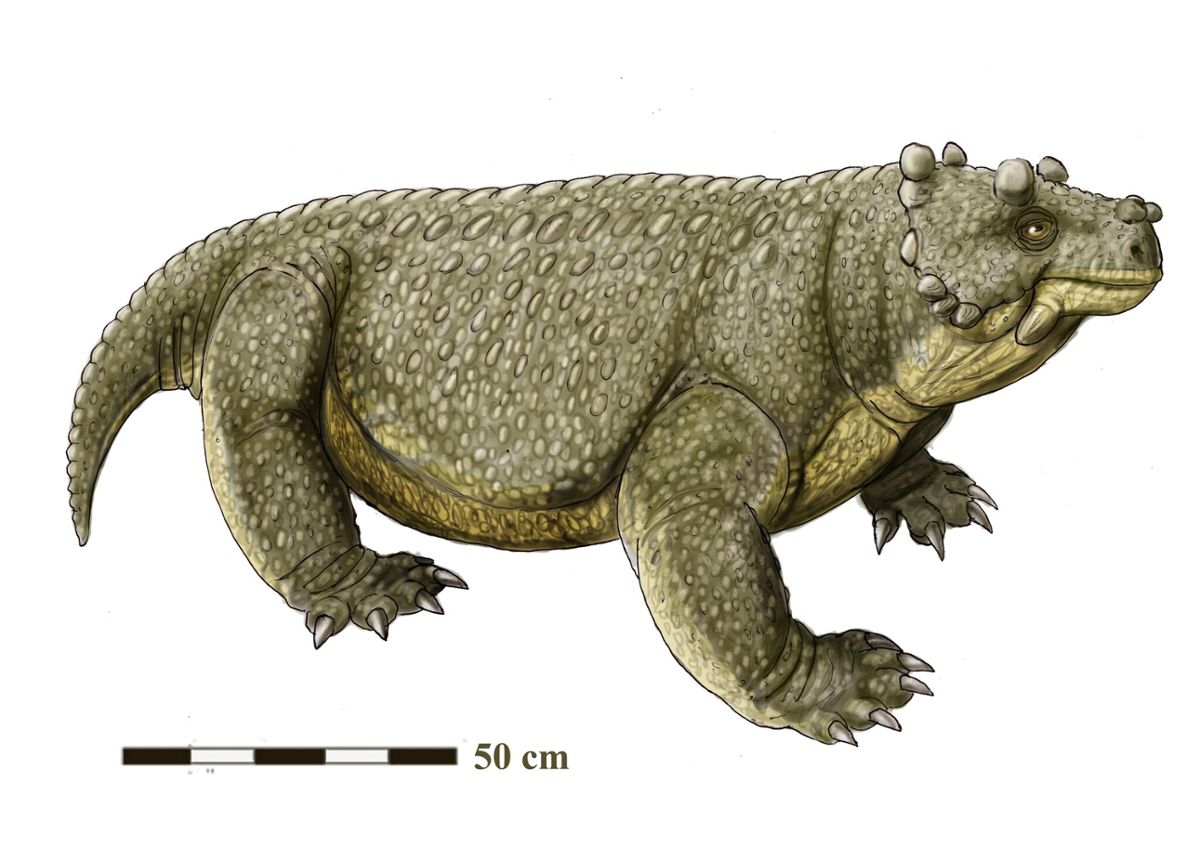Y: Today's Moment of Science is about a surprising discovery made by paleontologists about a reptile-like animal called Bunostegos akokanensis that lived two hundred and fifty million years ago.
D: Hmmm...That's before the time of the dinosaurs, during the Permian period, when all the continents were joined as a single land mass called Pangaea. So, did Bunostegos look like a lizard?
Y: No, it didn't, and that's the surprise. Lizards have legs that jut out from the sides of their body and slant down from the elbow or knee. Bunostegos belongs to a group of reptile predecessors called pareiasaurs that generally had more upright rear legs. In 2015 an international team of paleontologists published the first study of fossil limb bones of Bunostegos, using specimens they discovered in northern Niger. It turns out, unexpectedly, that their front legs couldn't have had a sprawling stance either.
D: So, how did it stand then?
Y: It's legs probably extended straight down from its body, and it walked upright on all fours, like a cow, or a hippopotamus, or most four legged mammals, or many dinosaurs.
D: I can see why the paleontologists were excited. That makes Bunostegos different from modern reptiles, and the earliest animal known to walk that way. That's a major discovery.
Y: Bunostegos had a lot in common with a cow. It stood and walked like one, and was about the same size. It was a herbivore too. There were some differences--the animal had a knobby skull and bony armor down its back.
D: Still, that's a lot more familiar than I would have expected for a prehistoric ancestor of reptiles.










